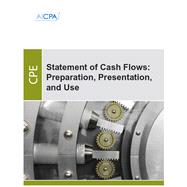Disposed to numerous challenges and shortcomings, a cash flow statement is one of the most important financial statements for business. This book introduces the accountant to, and helps to boil down, the intricacies of the overall cash flow statement and its three major sections.
Readers will review options for statement of cash flows preparation and presentation and methods to improve cash flow analysis. They will also explore the requirements of the statement of cash flows guidance and related standards, and learn how to make appropriate classifications of transactions and events.
This book includes new changes resulting from FASB ASU No. 2016-15, Statement of Cash Flows (Topic 230), Classification of Certain Cash Receipts and Cash Payments (a consensus of the Emerging Issues Task Force), and FASB ASU No. 2016-18, Statement of Cash Flows (Topic 230): Restricted Cash (a consensus of the FASB Emerging Issues Task Force).
This book will help accounants to:
- Recall the fundamental cash flow reporting requirements.
- Recall how to prepare a statement of cash flows using both the direct and indirect method of presenting operating information.
- Identify when investing and financing cash flows can be reported net.
- Identify cash flow transactions as operating, investing, or financing.
- Indicate how to present and disclose significant transactions that have no direct cash flow effect.
- Recall how to report selected operating items such as interest, taxes, and receivables.








